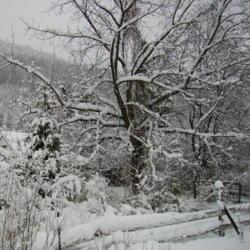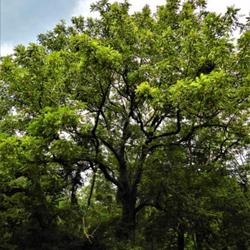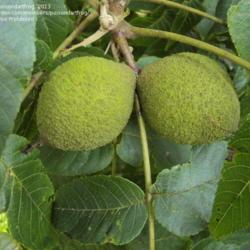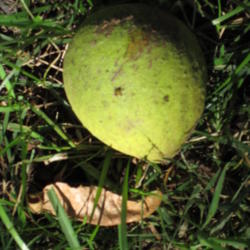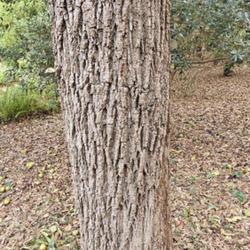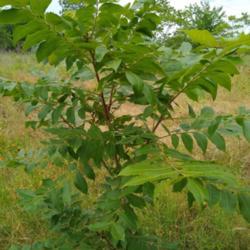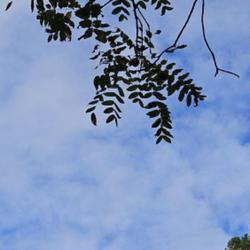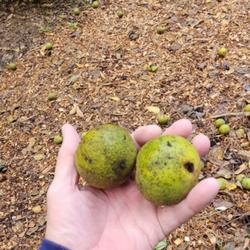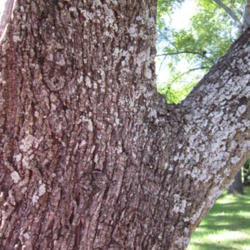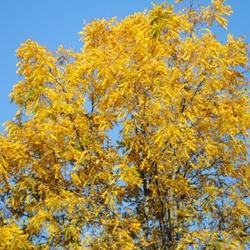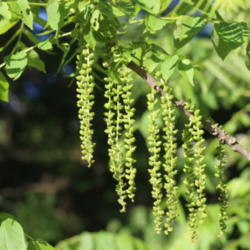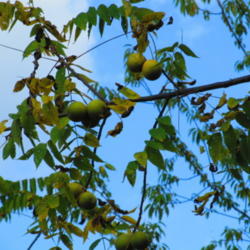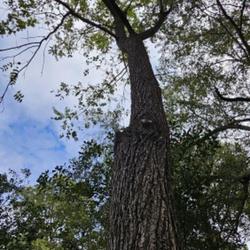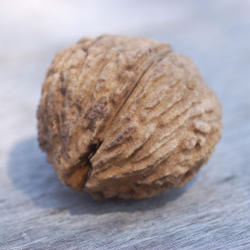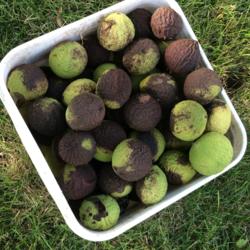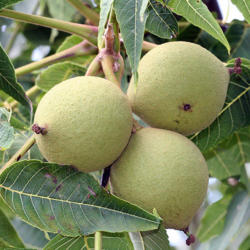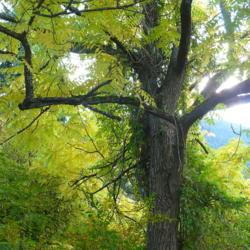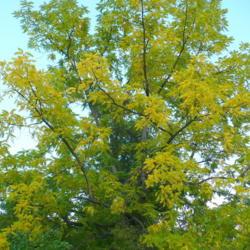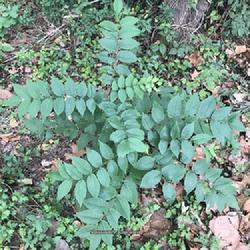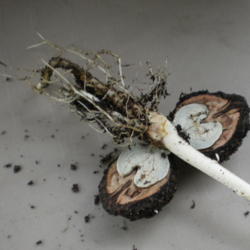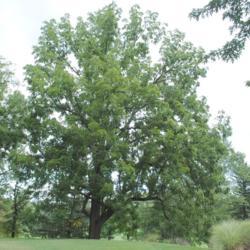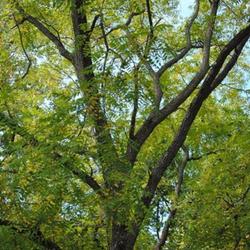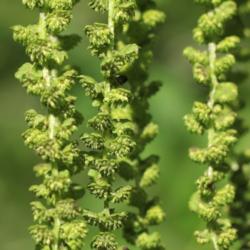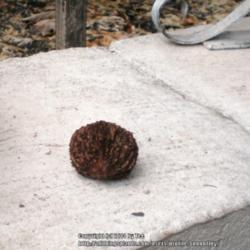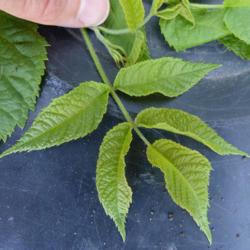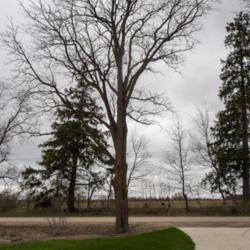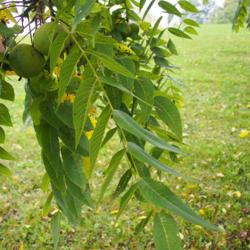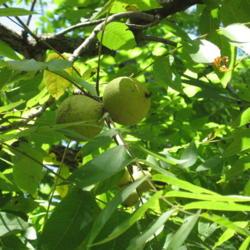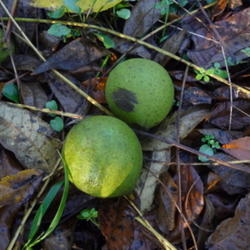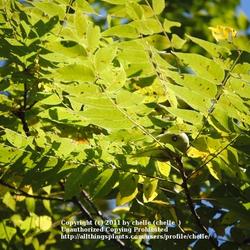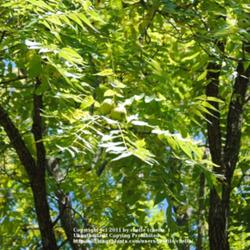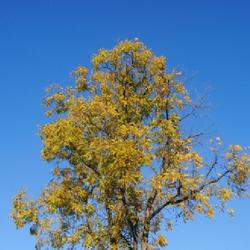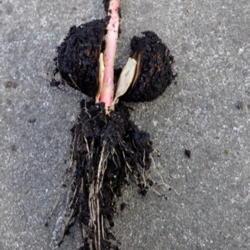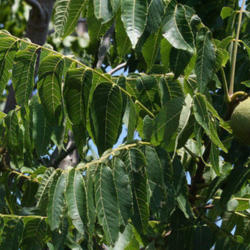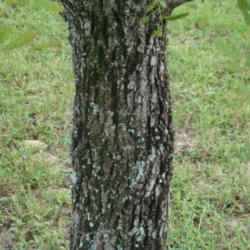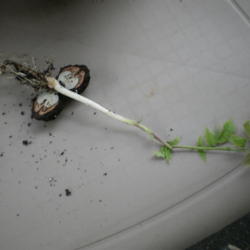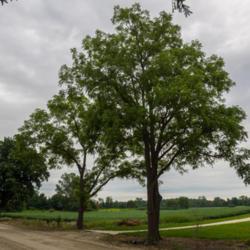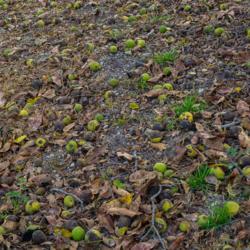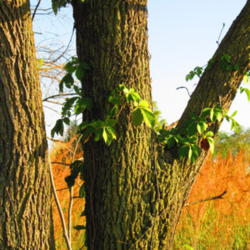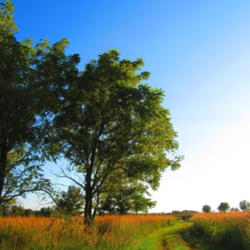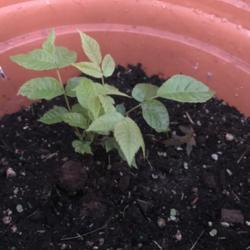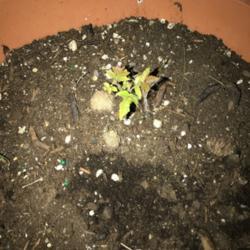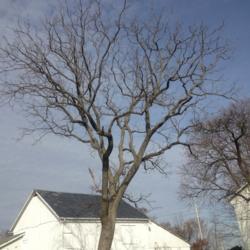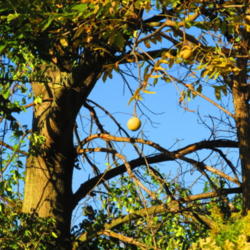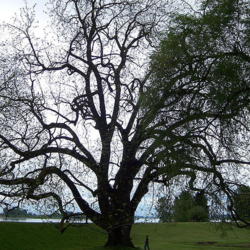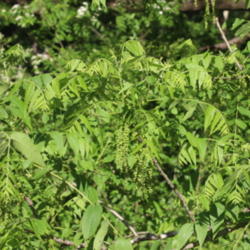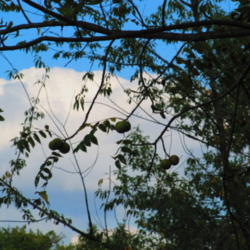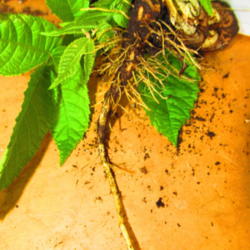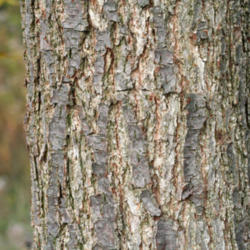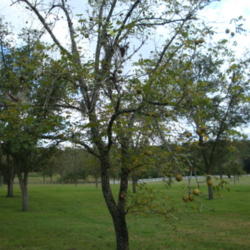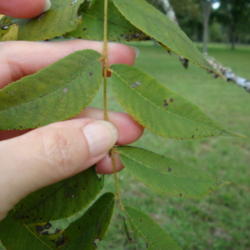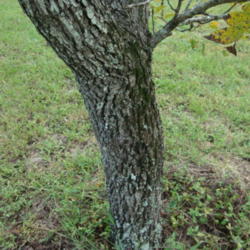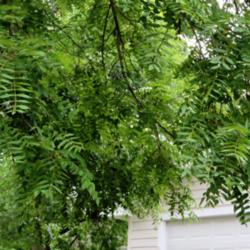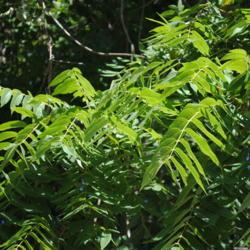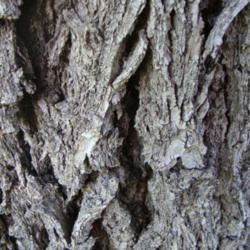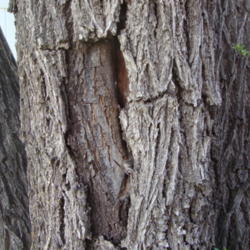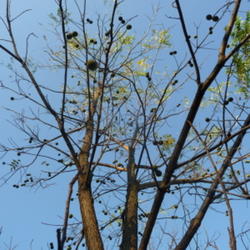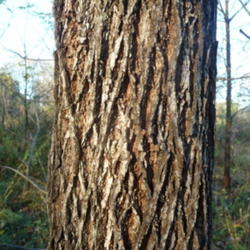Posted by
ILPARW (southeast Pennsylvania - Zone 6b) on Jan 6, 2018 12:37 PM concerning plant:
The Eastern Black Walnut is a common large tree that usually is a large part of pioneer woods; that is, the first trees to grow up in a meadow or field. Other common species with it in pioneer woods are Boxelder, Green Ash, Elms, Hackberry, Sycamore, Mulberry, Cottonwood, and Silver Maple. It grows in both lowland wet mesic areas, bottomlands, and floodplains, and also in upland dry mesic in fields or along mature, climax woods from the edge of New England down to northwest Florida to east Texas up eastern Oklahoma & Kansas to southeast South Dakota through southern Minnesota & southern Wisconsin & southern Michigan to an area of north of Lake Erie in Ontario. Its compound leaves are 12 to 24 inches long with 15 to 23 leaflets that are hairless above. The fruit is a round nut covered with a green husk that is 1.5 to 2 inches in diameter that matures in late summer and is loved by squirrels and edible for humankind. The buds are naked, wooly, and gray. The pith in the stout twigs is buff colored and chambered. The bark is dark brown to almost black and deeply furrowed. It is fast growing in rich, moist soils of 2 to 3 feet/year and slower in dry soils of 1 to 2 feet/year and it lives about 250 years. It develops a large taproot and is difficult to transplant. It is sold by some native plant nurseries, and mail order specialty nurseries that also sell a number of cultivars chosen for fruit production.
Posted by
flaflwrgrl (North Fl. - Zone 8b) on Sep 29, 2013 7:02 PM concerning plant:
The roots of black walnut produce juglone, which may be toxic to some plants, such as tomato, potato, blueberry, blackberry, azalea, rhododendron, camellia, red pine, mountain laurel, and apple. These may be injured or killed within 2 months of planting within the root zone of the black walnut, but not all plants are sensitive to juglone, and many can be grown in close proximity to the eastern black walnut.
This is native to eastern North America & grows from Ontario to South Dakota to the Florida panhandle & to central Texas.
Slow to come to fruit, these trees may not fruit until around 8 years of age and will not bear heavily until at least 20 to 30 years of age, after which they will produce for another 100 years. They bear most when in an open setting rather than a forest setting.
The fruit ripens and falls to the ground in October. It is about the size of a large lime you buy in the grocery store and is green in color. This is the husk which covers the nut inside. For best flavor, the husk should be removed while it is green, before it turns brown. It is very difficult to remove the husk. People use hammers and whack the heck out of them on a concrete surface or they drive over them with their cars. You will work to get the meat of this nut, and work hard! They also stain terribly --- your hands, concrete, almost anything they come into contact with. The stain has been used to dye women's hair and in coloring textiles, as well as in Hollywood from the 1930's into the 1960's to stain the skin of actors playing the part of Native Americans.
The nutmeats are, of course, used in foods, and oil is pressed from the seeds. The wood is used in furniture making, flooring, and the stocks of firearms.
White tailed deer are known to graze on the leaves. Squirrels will eat the nutmeats; they also bury the nuts, which results in "volunteer" seedlings sprouting up.
It is extremely difficult to transplant black walnut as it does not like to be disturbed, and its deep taproot makes the task tricky, if not impossible.
The male flowers are borne in catkins, with pistillate female flowers being borne on the same tree but at slightly different times. It is good to have complementary pollinators within range.
Information on fruiting varies, with some reputable sources saying they are alternate bearing (years) and some othe reputable sources saying that they bear heavily only once every 5 years.

